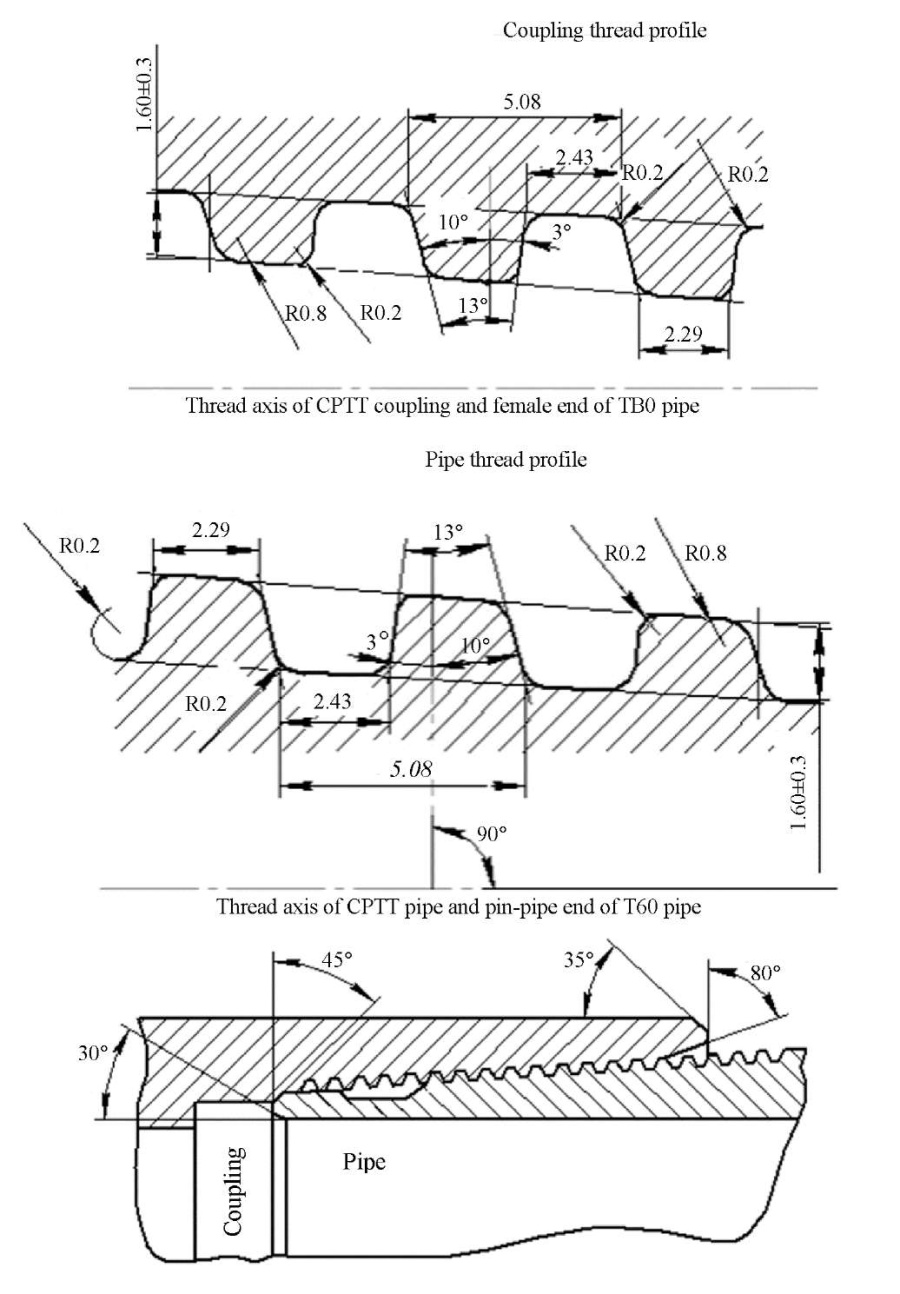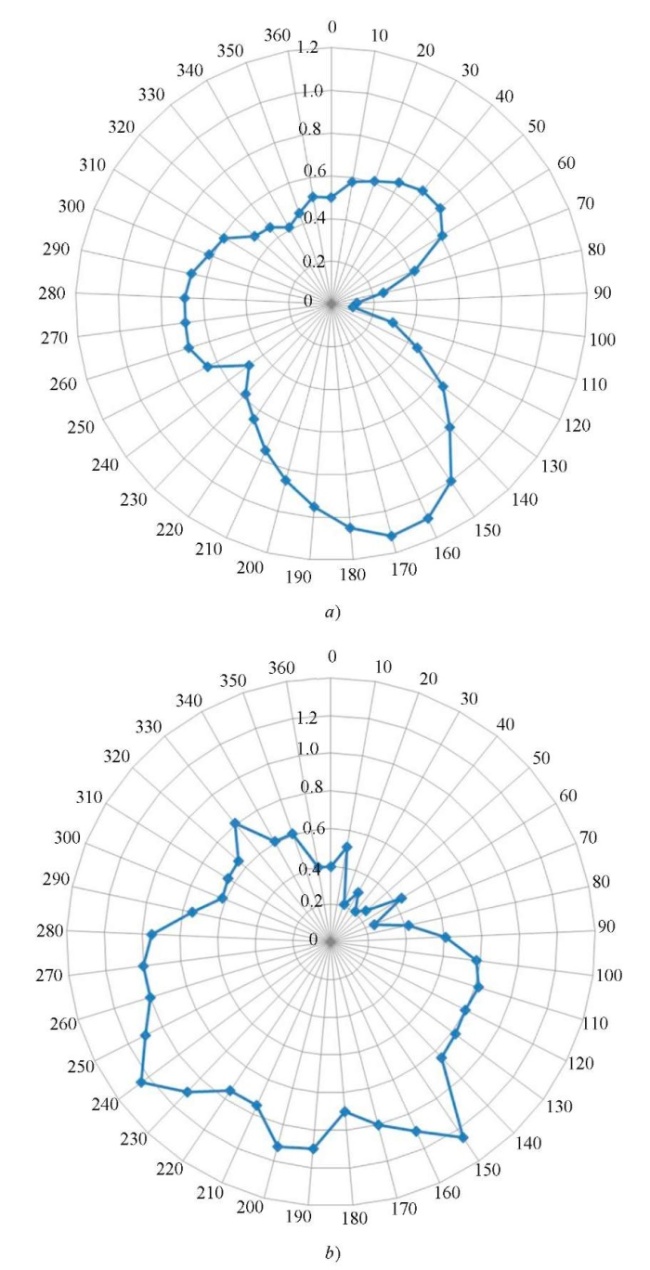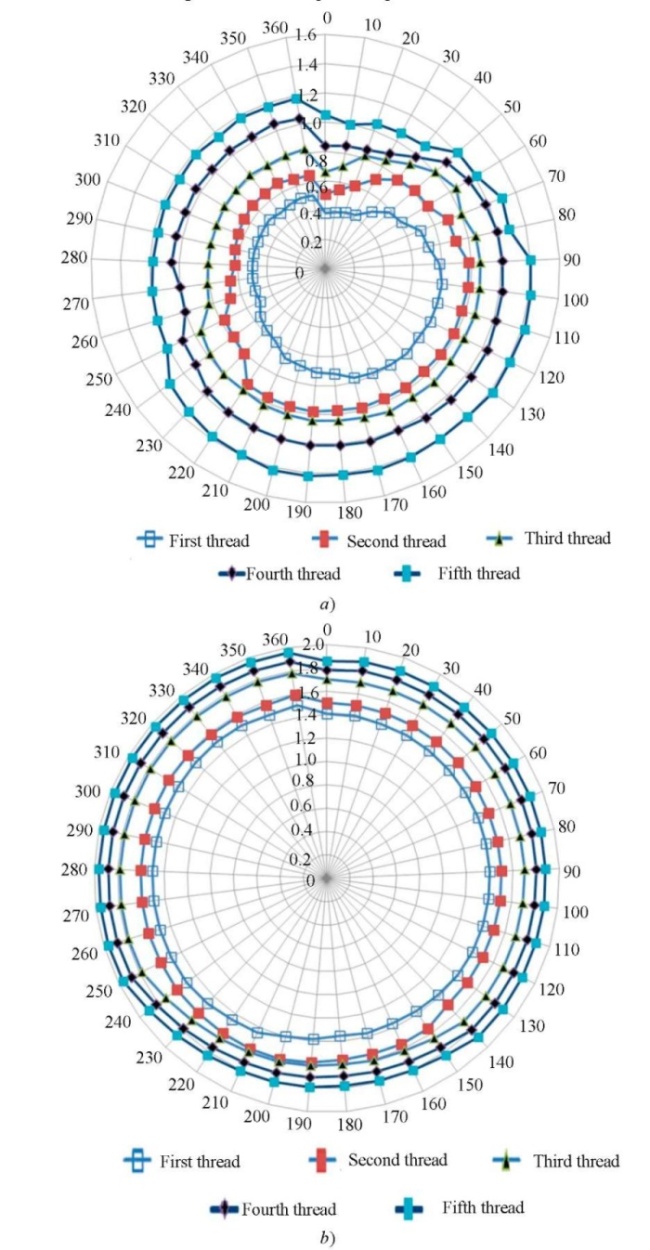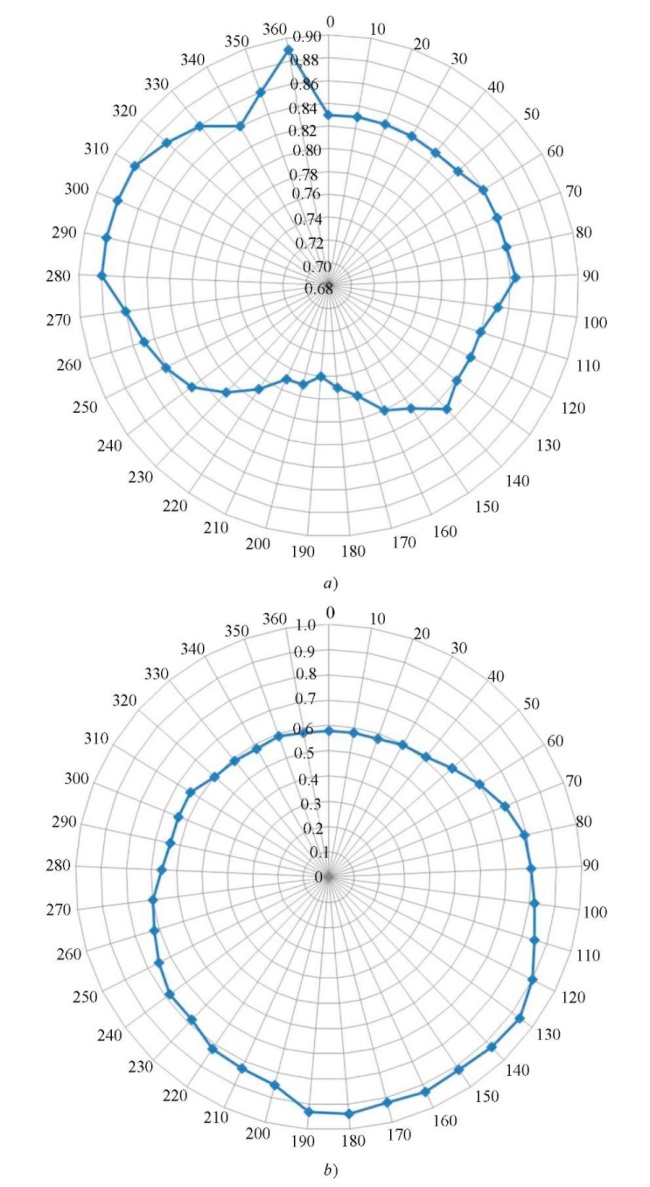Scroll to:
Study of Tapered Threads Parameters Affecting the Quality of the Oil Pipeline Connection
https://doi.org/10.23947/2687-1653-2022-22-3-242-251
Abstract
Introduction. With the growth in the production and transportation of gas and oil, the urgency of the problem of tightness of the connection of pipes of the oil and gas range increases. The most common are coupling and streamline threaded connections. Threads of the buttress type, conical trapezoidal, and triangular threads are used. The tightness of the connection depends directly on their quality. The production of pipes and couplings is influenced by many factors. Examples include technological heredity, rigidity of technological equipment, its setting and resetting. The required connection quality is provided by the quality of the elements. The assembly should take into account the possibility of complete interchangeability. The second recommended option is a group assembling. In all cases, control operations are mandatory. The paper presents the results of studies on the distribution of pipe and coupling thread quality parameters in the batch.
Materials and Methods. Fragments (tubular parts) of casing pipes with trapezoidal thread and increased tightness (CPTT) and with trapezoidal thread of the buttress profile were studied. They were randomly selected from different batches. When measuring, the samples were fixed in the chuck of 1I611P lathe. The measuring instrument was a clock type 0 accuracy class indicator with a stand. Generally accepted statistical methods were used to evaluate the data obtained.
Results. The experiments have found how the tightness of the connection through the method of complete interchangeability is affected by the radial runout of the surfaces of the thread profile tops, the pipe chamfers, and the sealing belt.
Discussion and Conclusions. Significant deviations of the values of the thread parameters from the permissible ones were found, which might cause a leak in the connection. Obtaining a high-quality and reliable connection is possible when assembling by the method of incomplete or group interchangeability.
Keywords
For citations:
Tsybrii I.K., Koval N.S., Issabekov Zh.N. Study of Tapered Threads Parameters Affecting the Quality of the Oil Pipeline Connection. Advanced Engineering Research (Rostov-on-Don). 2022;22(3):242-251. https://doi.org/10.23947/2687-1653-2022-22-3-242-251
Introduction. Exaggeration of the operating conditions for pipes is associated with the complication of profiles and an increase in the depths of wells in new oil-and-gas fields. Oil and gas grade pipes are exposed to significant alternating loads at the operating temperature ranges from minus 60 °C to plus 200 °C [1–6]. The products in question must meet the requirements for resistance to fatigue and brittle fracture, as well as corrosion resistance in aggressive environments. This determines the choice of materials for their production. The considerable length of oil and gas pipelines implies providing reliable connection of pipes. Domestic manufacturers offer coupling and inserted connections with conical trapezoidal and triangular threads [7–10]. In the coupling types, the following are distinguished:
- CPTT (for casing pipes with trapezoidal thread and increased tightness);
- with buttress trapezoidal thread.
The connection of the first type is characterized by high tightness and resistance to tensile loads. These qualities are provided by the shape of the thread profile — an uneven trapezoid with a pitch of 5.08 mm and a taper of 1:16 (Fig. 1)

Fig. 1. Coupling connection of casing pipes of CPTT type
The angle of the stab flank of the pipe of 10 ° provides an easy fit into the coupling and reduces the probability of thread jamming. Under tensile and bending loads, the pipe thread should not disengage from the coupling thread; therefore, the support end of the profile is made at an angle of 3 ° [8–12]. The mating conical sealing surfaces located behind the thread increase the tightness. When connecting, the amount of tension is limited due to the contact of the products along the inner bearing faces. The sealing ring made of PTFE increases the tightness of the joint [13].
The scheme of the coupling connection with a trapezoidal buttress thread is shown in Figure 2.

Fig. 2. Coupling connection of buttress casing pipes
A distinctive feature of this type of connection is the ability to take significant tensile loads for a long time. The buttress thread profile has the shape of an unequal trapezoid with a pitch of 5.08 mm and a taper of 1:16 [14].
The angles of inclination of the embedded and support ends are 10° and 3°, respectively. This simplifies assembly and reduces the probability of jamming. For tightness, a special lubricant or fluoroplastic rings are used [15].
Basic requirements for common type of casing pipe connections:
- permeability in wellbores of varying complexity and depth, including in areas of significant curvature;
- tightness of pipe columns and high strength for all types of loads;
- providing the passage of devices and tools into the inner space of the pipe columns during technological operations.
It is required to strictly comply with the requirements of standards for the quality of threaded connections, as well as for the means and methods of control. The characteristics of threaded connections of casing pipes are regulated by GOST 632–80 and API 5B international standards. These documents prescribe to control the following parameters: appearance of the thread, thread geometry and sealing conical surfaces, tension on the threaded working gage.
Note that the shapes of the mating elements of the pipe and coupling in cross sections do not always coincide. In these cases, in some areas, the mating surfaces will not contact, that is, the mating will remain loose. This creates conditions for a leak in the connection. If such a gap is not eliminated by positive drawing-up of the conical joints, then it is impossible to provide the effect of a ring lock, which guarantees tightness. Thus, deviations from the taper create prerequisites for leaks. As an example, consider the connections of CPTT and buttress pipes with an outer diameter of 127 mm. On a section of 25.4 mm, the permissible deviations from the taper are respectively:  mm and
mm and  mm.
mm.
Materials and Methods. The data obtained in the framework of the study were statistically processed using generally accepted methods.
To determine the degree of tightness of the suitable pipes, the radial runout of the conical and cylindrical surfaces of the pipes was measured. These elements were fixed in the outside jaws of a three-lobe lathe chuck (i.e., along the pipe base surface on 1I611P machine), subject to minimization of elastic deformations of the object from the clamping forces. First, the lathe jaws were brought into contact with the nozzle with a force sufficient to hang it off — this is how its axial position in the chuck was corrected when the spindle was turned. The surface runout was visually controlled. Then, in the plane of the jaws, a contact was created between the surface of the tubular part and the dial gauge mounted on the rack (Fig. 3). The tubular part was clamped in the chuck jaws. The gauge arrow was used to make sure that the clamping force did not deform the wall of the tubular part between the chuck jaws.

Fig. 3. Scheme for measuring radial runout of the tubular parts and couplings:
1 — product; 2 — three-lobe lathe chuck; 3 — dial gauge
To measure the runout of the seal band and chamfer, the lathe slide with the gage holder initially remained stationary, and the ball attachment of the gage was installed in the middle of the band and in the middle of the chamfer. The gage readings were taken and recorded by turning the machine spindle every 10° (fixed in 36 sections, starting from zero). The gage moved in the axial direction of the part, the ball attachment maintained its position relative to the center of the chamfer or band.
The runout of the threaded surface was measured along the thread ledge ribbon. To do this, the gear and the feed box of the machine were tuned to an inch thread with five threads per inch. After turning on the sliding clasp nut through spinning the spindle, all backlashes in the kinematics of the machine were selected. At that, the gage was set to the middle of the ribbon of the first thread in the zero section.
Research Results. Figure 4 shows the results of measuring the radial runout of the outer surfaces of the tubular parts with various connections in the polar coordinate system.

Fig. 4. Radial runout of the outer surfaces of threaded pipes:
a — buttress; b — CPTT
To control the taper in the tolerance field, the deviations of the thread heads on five threads from a given profile (Archimedean spiral) in the radial direction were measured. For the buttress tubular part, a graph was plotted in the polar coordinate system based on the values of the measured radial runout of the surface of the thread heads (Fig. 5 a). Here, the radial scale had values from 0 to 2 mm, and the circular scale — from 0 ° to 360 °. Similarly, the radial runout of the thread apexes on the CPTT tubular parts was investigated (Fig. 5 b).

Fig. 5. Radial runout of the surface of the thread heads
from the start of thread at five turns:
a — buttress; b — CPTT
The diagram (Fig. 6 a) is based on the results of measuring the radial runout of the chamfers of tubular parts with buttress thread. The values of the radial runout of the band are reflected in graph 6 b, which shows the circularity deviation of the seal band. Comparison of the values of the circularity deviation of the band shape obtained by different methods shows their identity.

Fig. 6. Radial runout:
a — of the tubular part chamfer with buttress thread;
b — of the seal band of the CPTT connection
Discussion and Conclusions. The analysis of Figure 4 has shown that pipes with different types of connections are characterized by significant taper deviations. At the same time, the surface of the pipe with a buttress thread is relatively smooth. If the diagram visualizes the CPTT thread, then there are sharp outliers of a large number of points. This means that there is a rough microrelief on the surface of the pipe with significant random surface level differences.
In Figure 5 a, the irregularity of the ascending spiral line with a difference of radius vectors of more than 0.4 mm is clearly visible. The wave-like change in the ordinate line of the profile is a consequence of the mismatch of the rotation axis of the tubular parts and the thread axis. This harmonic component can be compensated by special mathematical processing, which was not planned in this study. The analysis of Figure 5 b shows rather large irregularity of the ascending line of the thread head. This indicates significant deviations of the surface under consideration from a given profile (Archimedean spiral) for the CPTT connection.
The analysis of Figure 6 has shown that the deviation from sphericity (difference between the largest and smallest radii-runout vectors) is about 0.25 mm. The shape errors of the seal band for the CPTT connection were determined by different methods. According to the measured values of the band diameter (in the plane of the end face), a variation in size up to 0.25 mm (from the zero section, through 30 °) was detected: 169.35; 169.20; 169.10; 169.15; 169.25; 169.30. The angular distribution of the diameter counts indicated the oval shape of the band surface in cross section.
Thus, it can be concluded that there are significant deviations on the surfaces of pipes and couplings. We are talking about the quality of threads, chamfers, bands, which determines the connection reliability. These deviations cause the appearance of defective products in the batch. Their use does not provide the tightness and reliability of the pipe — coupling connection, which causes leaks during hydraulic tests. The specified connection quality is provided only by the method of group interchangeability, which requires preliminary separation of the assembled products into groups and generates additional costs. It is required to tighten the tolerances for the manufacture of threaded parts of pipes and couplings, which will allow for the assembly by the method of complete interchangeability. The considered deviations may occur due to the instability of the technological process of obtaining threads. In particular, the insufficient rigidity of the technological system and its untimely adjustment affects negatively.
References
1. Failure and Integrity Analysis of Casings Used for Oil Well Drilling / G. P. Cirimello, L. Otegui, G. Carfi, W. Morris // Engineering Failure Analysis. — 2017. — Vol. 75. — P. 1–14. http://dx.doi.org/10.1016/j.engfailanal.2016.11.008
2. Song, S. Optimizing Exoskeleton Assistance for Faster Self-Selected Walking / S. Song, S. H. Collins // IEEE Transactions on Neural Systems and Rehabilitation Engineering. — 2021. — Vol. 29. — P. 786–795. http://dx.doi.org/10.1109/TNSRE.2021.3074154
3. Muscle-Tendon Mechanics Explain Unexpected Effects of Exoskeleton Assistance on Metabolic Rate during Walking / R. W. Jackson, C. L. Dembia, S. L. Delp, S. H. Collins // Journal of Experimental Biology. — 2017. — Vol. 220. — P. 2082–2095. https://doi.org/10.1242/jeb.150011
4. Non-destructive Testing Techniques Based on Failure Analysis of Steam Turbine Blade / Li Tian, Yan Hai, Zeng Qingyue, Yin Qin // IOP Conference Series: Materials Science and Engineering. — 2019. — Vol. 576. — P. 012038. https://iopscience.iop.org/article/10.1088/1757-899X/576/1/012038/meta
5. Experimental Study of Hoop Stress of Crescent Shaped and Eccentric Worn Casing / Yinping Cao, Yan Pan, Hongxue Mi [et al.] // IOP Conference Series: Earth and Environmental Science. — 2021. — Vol. 804. — P. 022014. http://doi.org/10.1088/1755-1315/804/2/022014
6. FE Simulation of Sealing Ability for Premium Connection Based on ISO 13679 CAL IV Tests / Yihua Dou, Yufei Li, Yinping Cao [et al.] // International Journal of Structural Integrity. — 2020. — Vol. 12. — P. 138–148. http://dx.doi.org/10.1108/IJSI-11-2019-0125
7. Analysis of the Performance Improvement Effect of Combined Packing for Oil and Gas Well Packer / Huifeng Liu, Wei Zhang, Yinping Cao, Yihua Dou // IOP Conference Series: Earth and Environmental Science. — 2020. — Vol. 514. — P. 022017. http://dx.doi.org/10.1088/1755-1315/514/2/022017
8. Prediction and Analysis of Wellbore Temperature and Pressure of HTHP Gas Wells Considering Multifactor Coupling /Jie Zheng, Yihua Dou, Yinping Cao, Xin Yan // Journal of Failure Analysis and Prevention. — 2020. — Vol. 20. — P. 23–28. http://dx.doi.org/10.1007/s11668-020-00811-2
9. YinhuaDou. An Experimental Study of Whirling Motion and the Relationship between Torque and Rotary Speed for Simulated Casing Drilling /Yinhua Dou, Stefan Miska, Yinping Cao // Chemistry and Technology of Fuels and Oils. — 2020. — Vol. 56. — P. 285–299. http://dx.doi.org/10.1007/s10553-020-01138-2
10. Laboratory Study on Casing Deformation during Multistage Horizontal Well Fracturing in Shale Gas Development and Strain Based Casing Design / Shangyu Yang, Lihong Han, Jianjun Wang [et al.] // Journal of NaturalGas Science and Engineering. — 2021. — Vol. 89. — P. 103893. https://doi.org/10.1016/j.jngse.2021.103893
11. Failure Analysis of Casing Dropping in Shale Oil Well during Large Scale Volume Fracturing / Hang Wang, Wenlong Zhao, Zhenhui Shu [et al.] // Engineering Failure Analysis. — 2020. — Vol. 118. — P. 104849. https://doi.org/10.1016/j.engfailanal.2020.104849
12. Coupled Seepage-Mechanical Modeling to Evaluate Formation Deformation and Casing Failure in Waterflooding Oilfields / Lihong Han, Fei Yin, Shangyu Yang [et al.] // Journal of Petroleum Science and Engineering. — 2019. — Vol. 180. — P. 68–72. http://dx.doi.org/10.1016/j.petrol.2019.05.035
13. Fatigue and Corrosion Fatigue Behaviors of G105 and S135 High-Strength Drill Pipe Steels in Air and H2S Environment / Lihong Han, Ming Liu, Sheji Luo, Tian Jian Lu // Process Safety and Environmental Protection. — 2019. — Vol. 124. — P. 63–74. http://dx.doi.org/10.1016/j.psep.2019.01.023
14. Mechanical Performance of Casing in In-situ Combustion Thermal Recovery /Shangyu Yang, Lihong Han, Chun Feng [et al.] // Journal of Petroleum Science and Engineering. — 2018. — Vol. 168. — P. 32–38. http://dx.doi.org/10.1016/j.petrol.2018.04.068
15. Research on Well Trajectory Deduction Method Based on Pythagorean-Hodograph Quintic Space Curves / Yufei Li, Yinping Cao, Yuxue Liu [et al.] // IOP Conference Series: Materials Science and Engineering. — 2019. — Vol. 688. — P. 033068. https://doi.org/10.1088/1757-899X/688/3/033068
About the Authors
I. K. TsybriiRussian Federation
1, Gagarin sq., Rostov-on-Don
N. S. Koval
Russian Federation
1, Gagarin sq., Rostov-on-Don
Zh. N. Issabekov
Kazakhstan
22, Satbaev St., Almaty
Review
For citations:
Tsybrii I.K., Koval N.S., Issabekov Zh.N. Study of Tapered Threads Parameters Affecting the Quality of the Oil Pipeline Connection. Advanced Engineering Research (Rostov-on-Don). 2022;22(3):242-251. https://doi.org/10.23947/2687-1653-2022-22-3-242-251












































